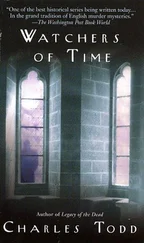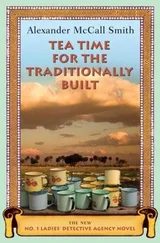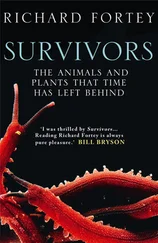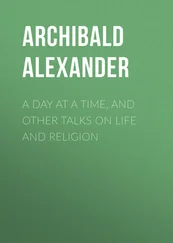Alexander Todd - A Time to Remember
Здесь есть возможность читать онлайн «Alexander Todd - A Time to Remember» весь текст электронной книги совершенно бесплатно (целиком полную версию без сокращений). В некоторых случаях можно слушать аудио, скачать через торрент в формате fb2 и присутствует краткое содержание. Город: Cambridge, Год выпуска: 1983, ISBN: 1983, Издательство: Cambridge University Press, Жанр: Химия, Биографии и Мемуары, на английском языке. Описание произведения, (предисловие) а так же отзывы посетителей доступны на портале библиотеки ЛибКат.
- Название:A Time to Remember
- Автор:
- Издательство:Cambridge University Press
- Жанр:
- Год:1983
- Город:Cambridge
- ISBN:0 521 25593 7
- Рейтинг книги:3 / 5. Голосов: 1
-
Избранное:Добавить в избранное
- Отзывы:
-
Ваша оценка:
- 60
- 1
- 2
- 3
- 4
- 5
A Time to Remember: краткое содержание, описание и аннотация
Предлагаем к чтению аннотацию, описание, краткое содержание или предисловие (зависит от того, что написал сам автор книги «A Time to Remember»). Если вы не нашли необходимую информацию о книге — напишите в комментариях, мы постараемся отыскать её.
A Time to Remember — читать онлайн бесплатно полную книгу (весь текст) целиком
Ниже представлен текст книги, разбитый по страницам. Система сохранения места последней прочитанной страницы, позволяет с удобством читать онлайн бесплатно книгу «A Time to Remember», без необходимости каждый раз заново искать на чём Вы остановились. Поставьте закладку, и сможете в любой момент перейти на страницу, на которой закончили чтение.
Интервал:
Закладка:
One of the pleasantest features of life in the University of Manchester in my time was that most of the teaching staff lunched at common table in the Staff House each day and, as a result, one quickly came to know colleagues in subjects far removed from one's own. A wide circle of friends could thus be built up quite quickly and with much less effort than is the case in a university like Cambridge, where the staff is broken up into small groups on a college and departmental basis. It is, of course, also true that in Oxford and Cambridge the lack of any body corresponding to the Senate of a university like Manchester tends to make inter-professorial contacts more difficult. In Manchester, staff from the Manchester College of Technology (which, although the Faculty of Technology of the University, was located about a mile away near the city centre) also came from time to time to the Staff House. My colleague there, James Kenner, Professor of Technological Chemistry, used to lunch with us fairly regularly and it was thus that I came to know him well. Kenner, a much older man than I, had a fearsome reputation as a quarrelsome man and, indeed, when I accepted the Manchester job there were several people who warned me that I would get a rough passage from Kenner, who would not take kindly to seeing a mere stripling in the senior chemical chair. They were quite wrong. Kenner could be quarrelsome and difficult and he relished chemical polemics, but this was largely because he had become embittered through what he regarded - perhaps not without reason - as lack of recognition of his chemical contributions and lack of support in the College of Technology. This is not the place to discuss the problems of a strange and difficult man; to me he showed only kindness, and I am grateful to him for many helpful discussions on various aspects of organic chemistry.
When we went to Manchester in 1938 my wife and I rented a largish typical Manchester villa in Broadway, Withington, and found ourselves living directly opposite another very well known organic chemist, Arthur Lapworth - one of the great figures in the development of modern views on the mechanism of organic reactions. Before this I had met him only once and that for a few minutes when Robert Robinson, one of his friends and a great admirer, introduced me to him at a Chemical Society meeting. Lapworth was Professor and Director of the Chemical Laboratories when Heilbron came to Manchester but was dogged by ill-health and finally resigned his chair in 1935. From 1938 until we moved to Wilmslow in 1941 I used to visit him each Sunday morning and chat about chemistry and chemists over a cup of coffee. These coffee mornings were kept under careful control by his wife, Kate Lapworth - a dragon-like lady who would storm in after about three-quarters of an hour, collect the coffee cups and unceremoniously send me about my business. I greatly enjoyed those talks with Arthur Lapworth and learned a lot from him. Mrs Lapworth made little attempt to conceal her view that I was something of a come-down as occupant of her husband's former chair. For one thing I was not a Fellow of the Royal Society when I took office and I remember vividly her reaction when, greatly to my surprise and delight, I was elected to the Fellowship in 1942. On being told by someone about the election she merely grunted and said 'And about time too!'
During my first year in Manchester we completed our studies on vitamin E and effected the total synthesis of alpha-tocopherol and its analogues. We were forestalled in the synthesis of the alpha-compound by Paul Karrer of Zurich who completed it a week or two before we did. The reason for this was rather absurd; to do the synthesis we needed the complex alcohol phytol which is a component of chlorophyll. Heilbron was the only man in England who was said to have any of it and he sent me a sample to carry out my synthesis. Unfortunately he made some mistake, and the material he sent me was not phytol. It took me a little time to find this out and get hold of some genuine phytol, (from Hoffmann La Roche) and while I was doing so Karrer completed his synthesis. Such things happen in research, but in the long run are not really important. We also pushed ahead with our work on Cannabis using column chromatography extensively in attempts to isolate the active principle or principles in a pure state. In this we failed, largely because our purification procedures, including preparative chromatography, as it was at that time, were too crude to make such isolation possible; indeed, something like twenty years were to elapse before it became possible for Israeli workers to take up the fractionation of Cannabis resin again using improved techniques, and succeed in isolating the active principle. However, when we set about the synthesis of cannabinol, an inactive constituent which had been first isolated and studied by Cahn some years before, our route took us via an intermediate tetrahydrocannabinol which showed powerful hashish-like action in rabbits. Our view at that time that the physiological effects of Cannabis were due primarily to another of the several possible isomeric tetrahydrocannabinols was vindicated much later, but we did little more work in this field since by that time (1940) the tempo of war work was increasing and we were forced to abandon the Cannabis research and never really went back to it. The synthesis of a variety of analogues of tetrahydrocannabinol was the subject of a good deal of work by Roger Adams and his school at the University of Illinois, they being still free of wartime restrictions. I had something of a contretemps with Adams on priorities in synthesis and publication in the Cannabis field at that time; with hindsight it now seems rather trivial, and it did not prevent us from becoming fast friends when we met after the war ended in 1945.
When Germany invaded Poland in 1939 Alison and I were on holiday at Ballantrae in Scotland. We at once drove back to Manchester where we got busy with blacking out the laboratory windows and doing the same job at our house in Withington where we also had to carry out the conversion of our cellar into a tolerable air-raid shelter. Our first child - a son - was born to our great joy on 11 November 1939 during the quiescent period known as the 'phony war' which lasted until the spring of 1940 when the Germans overran France. We then had to make a difficult decision, for many university people were sending wives and children to Canada or the United States to spare them from the intensive bombardment and possible invasion of Britain which everyone expected, and we had urgent invitations from the Bests in Canada and the Paulings in California. After much thought we decided that we should face as a family anything that was to come rather than separate, possibly for years, and perhaps for ever. In the same way we decided, after a few weeks' trial later on, when Alison and our son Sandy stayed with some friends in the Vale of Clywd, north Wales, that we would also eschew even that degree of separation. We never regretted our decision to stick together, although, when the heavy bombing of the Manchester area took place in the winter of 1940-41 and we were expecting our second child, we moved out of Manchester proper and in the summer of 1941 went to live in Wilmslow, some miles out to the south, whence I commuted daily to the university.
The outbreak of war soon brought other preoccupations and responsibilities. The chain of events leading to my appointment to Manchester had begun with the death of Sir Jocelyn Thorpe who was head of the chemistry department at Imperial College. He with Robert Robinson and Ian Heilbron made up the Dyestuffs Group Research Committee of I.C.I. Ltd, which held monthly meetings with the research chemists and management of the Dyestuffs Group at the Group's headquarters at Blackley in north Manchester. Since Thorpe's death the Committee had been one short. I.C.I. Dyestuffs Division (as it was now to be called) was beginning to awaken to the possibilities of synthetic drugs, and clearly this was likely to be a field which would undergo substantial development under wartime conditions. Whether or not it was due to my interest in and connections with that kind of activity I cannot say, but, at any rate, I was invited in the autumn of 1939 to join Heilbron and Robinson on the Group Committee now re-named the Dyestuffs Division Research Panel. To it as the pharmaceutical activity developed under Dr C. M. Scott, there were added the pharmacologists A. }. Clark and J. A. Gunn, and Warrington Yorke, an expert in tropical medicine; years later the pharmaceutical activities were hived off into a new Division, I.C.I. Pharmaceuticals, the chemical members of the D.D.R.P. continuing to act as advisers thereafter to both Divisions. This association with I.C.I. Dye-stuffs and Pharmaceuticals begun in 1939 continued formally for over twenty-five years; it remains today a happy informal association which has given me many friends over the years.
Читать дальшеИнтервал:
Закладка:
Похожие книги на «A Time to Remember»
Представляем Вашему вниманию похожие книги на «A Time to Remember» списком для выбора. Мы отобрали схожую по названию и смыслу литературу в надежде предоставить читателям больше вариантов отыскать новые, интересные, ещё непрочитанные произведения.
Обсуждение, отзывы о книге «A Time to Remember» и просто собственные мнения читателей. Оставьте ваши комментарии, напишите, что Вы думаете о произведении, его смысле или главных героях. Укажите что конкретно понравилось, а что нет, и почему Вы так считаете.










